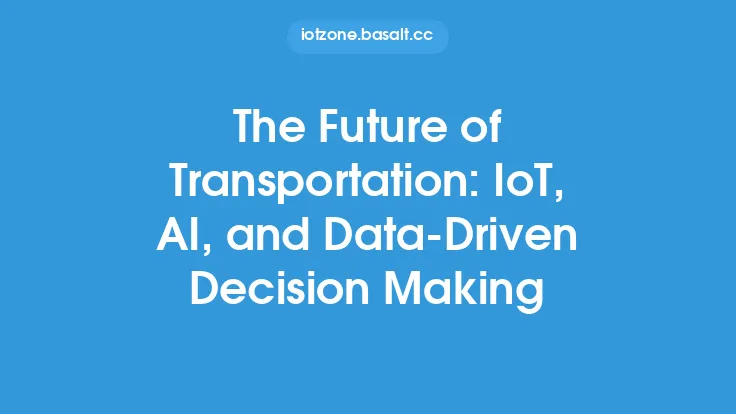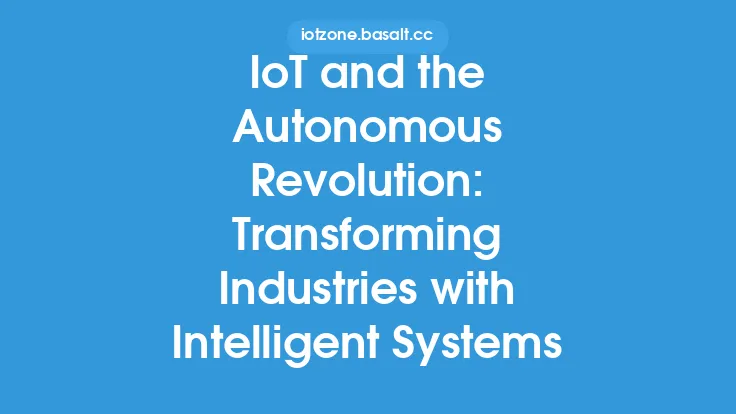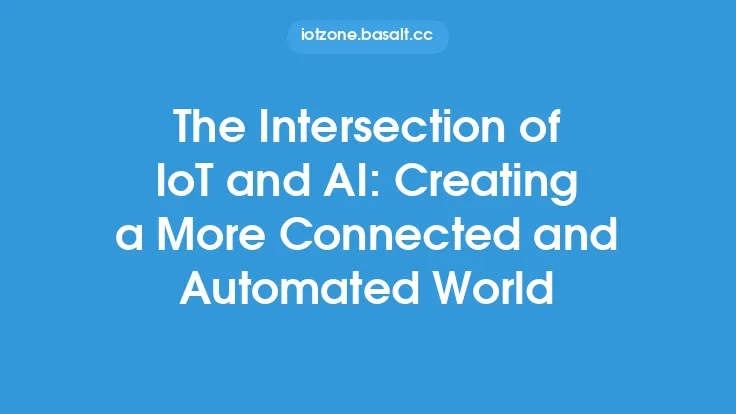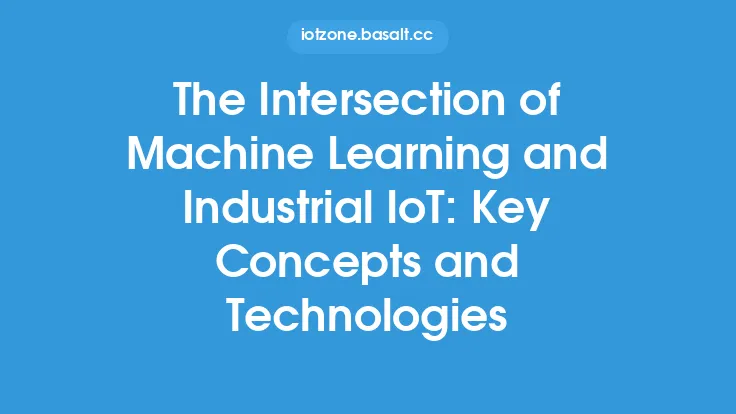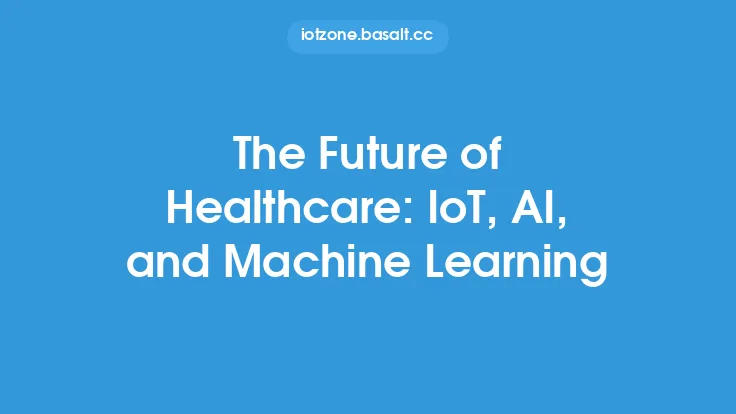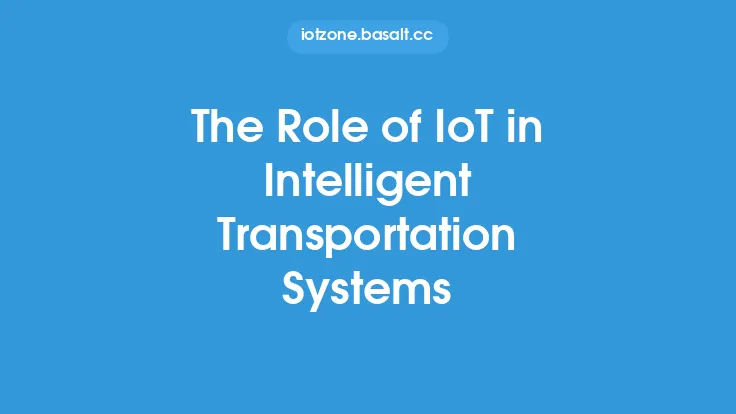The Internet of Things (IoT) has been rapidly evolving over the past decade, with an increasing number of devices becoming connected and generating vast amounts of data. However, the true potential of IoT can only be unlocked by integrating it with Artificial Intelligence (AI). The convergence of AI and IoT has given rise to Intelligent IoT Systems, which are capable of analyzing data, making decisions, and taking actions autonomously. In this article, we will delve into the world of Intelligent IoT Systems, exploring their architecture, applications, and the benefits they offer.
Architecture of Intelligent IoT Systems
Intelligent IoT Systems consist of several layers, each playing a crucial role in the overall functioning of the system. The first layer is the perception layer, which comprises sensors and devices that collect data from the environment. This data is then transmitted to the edge layer, where it is processed and analyzed using AI algorithms. The edge layer is responsible for reducing the amount of data that needs to be transmitted to the cloud, thereby reducing latency and improving real-time decision-making. The cloud layer provides additional processing power and storage, enabling more complex analysis and machine learning tasks. The final layer is the application layer, which provides a user interface and enables users to interact with the system.
Applications of Intelligent IoT Systems
Intelligent IoT Systems have a wide range of applications across various industries. In the industrial sector, they can be used for predictive maintenance, quality control, and supply chain management. For instance, AI-powered sensors can detect anomalies in equipment performance, enabling proactive maintenance and reducing downtime. In the healthcare sector, Intelligent IoT Systems can be used for patient monitoring, medical diagnosis, and personalized medicine. Wearable devices and sensors can collect data on patients' vital signs, activity levels, and other health metrics, enabling healthcare professionals to provide more effective care. In the transportation sector, Intelligent IoT Systems can be used for traffic management, route optimization, and autonomous vehicles.
Benefits of Intelligent IoT Systems
The integration of AI and IoT offers several benefits, including improved efficiency, enhanced decision-making, and increased automation. Intelligent IoT Systems can analyze vast amounts of data in real-time, enabling faster and more accurate decision-making. They can also automate routine tasks, freeing up human resources for more complex and creative tasks. Additionally, Intelligent IoT Systems can provide personalized experiences, tailored to individual preferences and needs. For example, smart homes can adjust lighting, temperature, and entertainment systems based on occupants' preferences and schedules.
Technical Requirements of Intelligent IoT Systems
The development of Intelligent IoT Systems requires a range of technical skills and expertise. These include data analytics, machine learning, and software development. Data analytics is critical for extracting insights from IoT data, while machine learning enables systems to learn from data and make predictions. Software development is necessary for creating the applications and interfaces that interact with the system. Additionally, Intelligent IoT Systems require robust security measures to protect against cyber threats and data breaches. This includes encryption, authentication, and access control.
Challenges and Limitations of Intelligent IoT Systems
Despite the many benefits of Intelligent IoT Systems, there are several challenges and limitations that need to be addressed. One of the major challenges is the lack of standardization, which can make it difficult to integrate devices and systems from different manufacturers. Another challenge is the need for high-quality data, which can be affected by factors such as sensor accuracy, data transmission latency, and storage capacity. Additionally, Intelligent IoT Systems require significant computational resources and energy, which can be a challenge in resource-constrained environments. Finally, there are concerns around privacy and security, as Intelligent IoT Systems often collect and process sensitive personal data.
Future of Intelligent IoT Systems
The future of Intelligent IoT Systems is exciting and rapidly evolving. As AI and IoT technologies continue to advance, we can expect to see more sophisticated and autonomous systems. The increasing use of edge computing, 5G networks, and cloud services will enable faster and more reliable data processing, reducing latency and improving real-time decision-making. Additionally, the development of new AI algorithms and techniques, such as deep learning and reinforcement learning, will enable Intelligent IoT Systems to learn and adapt more effectively. As the number of connected devices continues to grow, Intelligent IoT Systems will play an increasingly important role in shaping the future of industries and societies.
Real-World Examples of Intelligent IoT Systems
There are many real-world examples of Intelligent IoT Systems in action. For instance, the city of Singapore has implemented a smart transportation system, which uses AI and IoT sensors to optimize traffic flow and reduce congestion. The system analyzes data from traffic cameras, sensors, and social media to predict traffic patterns and provide real-time updates to drivers. Another example is the smart grid system implemented by the utility company, Duke Energy. The system uses AI and IoT sensors to monitor and control energy distribution, reducing power outages and improving energy efficiency. These examples demonstrate the potential of Intelligent IoT Systems to transform industries and improve our daily lives.
Best Practices for Implementing Intelligent IoT Systems
Implementing Intelligent IoT Systems requires careful planning, execution, and maintenance. Best practices include defining clear goals and objectives, selecting the right technologies and vendors, and ensuring robust security and privacy measures. It is also essential to develop a comprehensive data strategy, including data collection, storage, and analytics. Additionally, organizations should prioritize scalability, flexibility, and interoperability, to ensure that their Intelligent IoT System can adapt to changing requirements and integrate with other systems. Finally, ongoing monitoring and maintenance are critical to ensuring the system operates effectively and efficiently, and that any issues or errors are quickly identified and resolved.
